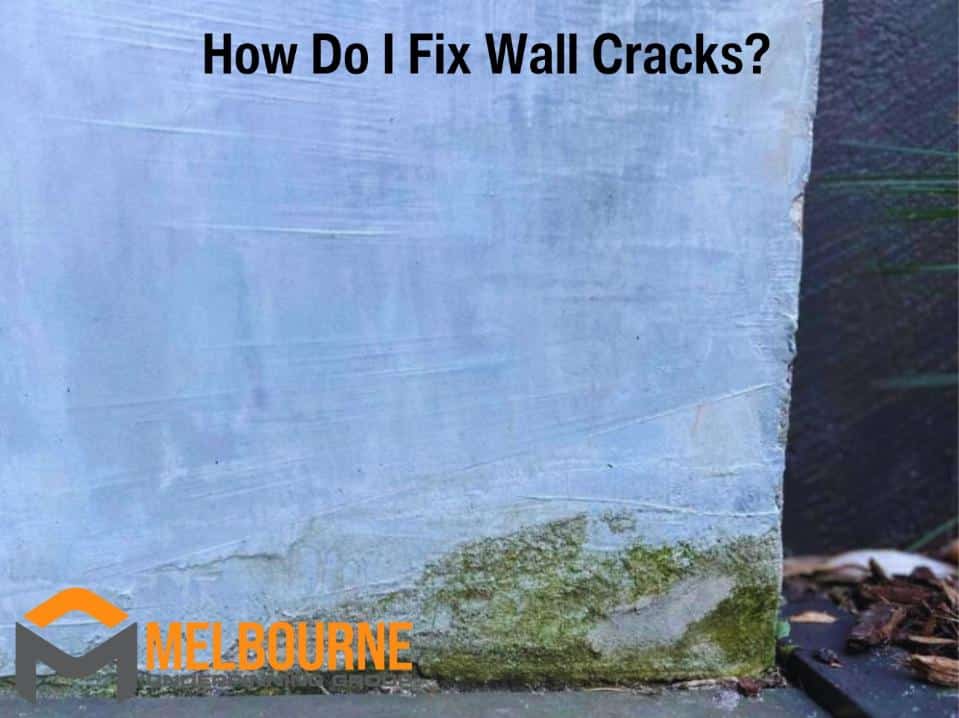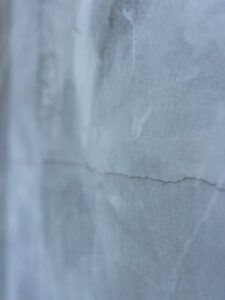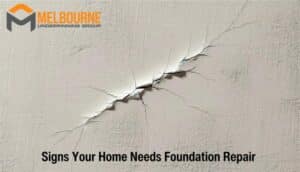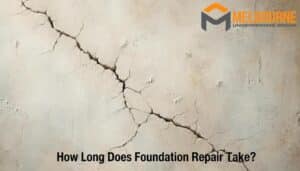
You can fix wall cracks by preparing the area, widening the crack, applying filler, smoothing it, and then painting or finishing as needed. This process ensures a thorough repair, blending seamlessly with the existing wall surface. Adequate preparation and choice of materials are crucial when fixing cracked walls.
In this post, we’ll discuss the steps to fix wall cracks in more detail.
Steps to Fix Wall Cracks
The following are the steps to fix wall cracks:
Prepare the Area
Clean the crack and the surrounding wall surface. Remove any loose material with a brush or vacuum, and ensure the area is dry. This preparation is crucial for the repair material to adhere properly, especially if the house is sinking and causing more stress on the walls.
Widen the Crack
Depending on the crack’s size, you may need to widen it slightly using a chisel or similar tool. This step ensures that the filling material adequately penetrates and bonds to the wall.
Apply Filler
Choose a suitable filler material. For small cracks, flexible fillers like acrylic or silicone-based products are ideal. Use a more substantial product like plaster or specialised wall crack filler for larger cracks. Apply the filler into the crack using a filling knife or spatula, making sure it’s fully filled and level with the wall surface.

Smooth the Filled Area
Once the filler has dried (follow the manufacturer’s recommended drying time), sand the area smooth. This might require a few rounds of filling and sanding for a seamless finish, especially if the crack is large or deep.
Paint or Finish as Needed
After the filled area is smooth and dry, apply an undercoat or primer, if necessary, followed by paint that matches the existing wall colour. If the wall has wallpaper or another type of finish, replace or repair that section to match the surrounding area.
Why Are My Walls Cracking?
Your walls may be cracking due to the following reasons:
- Shifting foundation: Natural settling or movement of the house’s foundation over time can cause cracks to appear in walls.
- Expansion and contraction: Changes in temperature can cause building materials to expand and contract, leading to cracks.
- Moisture damage: Excessive moisture from internal sources like plumbing leaks or external sources like rain can weaken walls or lead to cracking.
- Structural damage: Damage to the structure of the building, such as from an earthquake or poor construction, can result in wall cracks.
- Building age: Older buildings may develop cracks as materials deteriorate or as a result of long-term stress and wear.
What Happens If I Don’t Fix Wall Cracks?
If you don’t fix wall cracks, they can worsen over time, leading to more significant structural issues. Neglecting these cracks might result in increased moisture intrusion, which can cause mould and further damage to your home’s interior.
Considering these potential risks becomes essential, especially for larger or more complex cracks indicating severe structural problems.Is hiring a builder necessary for home repairs? We have a blog that answers that question in depth. Check it out to learn more.






